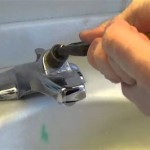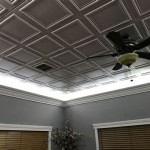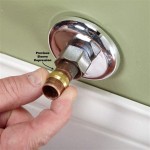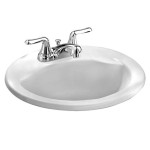How to Hide Drain Pipes in the Bathroom
Exposed drain pipes can detract from the carefully curated aesthetics of a bathroom. Whether renovating or simply seeking to improve the existing space, concealing these pipes is a common goal for homeowners and designers alike. This article explores various methods for hiding drain pipes in a bathroom, ranging from simple cosmetic solutions to more involved structural alterations.
The chosen method will depend on several factors, including the layout of the bathroom, the location of the pipes, the accessibility needed for future maintenance, and the budget available for the project. It’s important to consider these factors carefully before undertaking any work to conceal the pipes.
Boxing In: A Simple and Effective Solution
Boxing in drain pipes is a frequently employed technique that involves constructing a structure around the pipes to conceal them. This is generally a straightforward process that can be accomplished by a DIY enthusiast with moderate carpentry skills, or by a professional contractor.
The process begins with measuring the area encompassing the drain pipes. Accurate measurements are crucial to ensure the boxing structure fits snugly and effectively hides the pipes without being unnecessarily bulky. Consider leaving a small gap between the pipes and the boxing to avoid direct contact, which could potentially lead to condensation or noise issues.
Next, construct a frame using timber. The frame should be robust enough to support the chosen cladding material. Common materials for the frame include 2x2 inch or 1x2 inch lumber, depending on the size and span of the boxing. The frame should be securely fastened to the wall and floor using appropriate screws and anchors.
Once the frame is constructed, cladding can be applied. Popular cladding materials include MDF (Medium-Density Fiberboard), plywood, or moisture-resistant drywall. MDF provides a smooth surface that is easy to paint, while plywood offers greater strength and durability. Moisture-resistant drywall is particularly suitable for bathrooms due to its resistance to moisture and mold growth. The cladding should be cut to size and securely attached to the frame using nails, screws, or construction adhesive.
After the cladding is in place, seams and joints should be filled with caulk or wood filler, depending on the chosen material. This creates a smooth, seamless surface that is ready for painting or tiling. A primer should be applied before painting to ensure proper adhesion and a uniform finish. The boxing can then be painted to match the surrounding wall color or tiled to blend seamlessly with the bathroom décor.
One crucial consideration is access to the pipes for future maintenance or repairs. Incorporate an access panel into the boxing structure. This can be achieved by creating a hinged or removable section of the cladding. The access panel should be large enough to allow for easy access to pipe connections and valves. Ensure the access panel is discreetly integrated into the overall design to maintain the aesthetic appeal of the bathroom.
Another key factor for boxing in pipes is ventilation. Especially if the pipes are cold water pipes, condensation can form within the boxing. Drill small ventilation holes on the top and bottom of the boxing to promote airflow and prevent moisture buildup. This will help to prevent mold and mildew growth, ensuring the longevity of the structure and the health of the bathroom environment.
Utilizing Vanities & Pedestal Sinks
Bathroom vanities and pedestal sinks offer a practical and aesthetically pleasing way to conceal drain pipes. Vanity cabinets are designed to house the sink and provide storage space, effectively hiding the plumbing beneath. Pedestal sinks, while offering less storage, still conceal the drain pipe behind the pedestal.
When selecting a vanity, ensure it is appropriately sized for the bathroom and that it provides adequate clearance for the drain pipe. The vanity should be installed securely and plumbed correctly to prevent leaks and ensure proper drainage. Consider a vanity with a back panel that aligns with the drain pipe location to completely conceal it from view. Ensure the back panel has an appropriate cutout for the drain pipe to pass through.
Pedestal sinks are a more minimalist option that can be suitable for smaller bathrooms or those seeking a more classic aesthetic. The pedestal covers the drain pipe, creating a cleaner and more streamlined look. However, pedestal sinks offer limited storage space compared to vanities. Ensure the pedestal completely covers the drain pipe and provides a stable base for the sink.
When installing either a vanity or a pedestal sink, pay close attention to the plumbing connections. Use appropriate fittings and sealant to prevent leaks. Consider hiring a qualified plumber for the installation to ensure it is done correctly and safely. Proper installation is crucial for the long-term functionality and aesthetic appeal of the bathroom.
If the existing plumbing is not ideally positioned for a vanity or pedestal sink, minor adjustments may be necessary. This could involve moving the drain pipe slightly to align with the sink's drain opening. It's important to consult with a plumber before making any significant plumbing alterations to ensure they comply with local codes and regulations.
Consider the style and design of the vanity or pedestal sink to ensure it complements the overall aesthetic of the bathroom. Choose materials and finishes that are durable and easy to clean, such as ceramic, porcelain, or engineered stone. Regular cleaning and maintenance will help to keep the vanity or pedestal sink looking its best and prevent the buildup of dirt and grime.
Furthermore, ensure that any shut off valves are still accessible after installation. In the case of a vanity sink, this is usually handled easily through the open back, however, consider adding an access panel to the back of the vanity if easier access is needed.
Creative Concealment & Decorative Solutions
Beyond traditional methods like boxing in and vanities, there are various creative and decorative solutions for hiding drain pipes in the bathroom. These options can add a unique touch to the bathroom while effectively concealing unsightly plumbing.
One option is to use decorative pipe covers. These are available in a variety of materials, styles, and finishes, ranging from simple chrome covers to more elaborate designs that mimic natural materials like wood or stone. Pipe covers can be easily installed over existing drain pipes to conceal them without requiring any major structural alterations.
Another creative approach is to incorporate plants into the bathroom design to strategically conceal drain pipes. Tall potted plants can be placed in front of exposed pipes to obscure them from view. Hanging plants can also be used to create a visually appealing screen that hides pipes located higher up on the wall.
Using shelving units is another effective way to conceal drain pipes while adding storage space to the bathroom. Shelves can be installed around the pipes, creating a decorative display area that distracts from the plumbing. The shelves can be used to store toiletries, towels, or decorative items, adding both functionality and style to the bathroom.
Fabric drapes or curtains can also be used to conceal drain pipes, particularly in areas where the pipes are exposed along a wall or beneath a sink. Choose fabrics that are water-resistant and easy to clean, such as linen or cotton blends. The drapes or curtains can be hung from a rod or track to create a soft and elegant screen that hides the pipes.
Consider painting the drain pipes to match the surrounding wall color or to create a contrasting decorative element. This can be a simple and inexpensive way to camouflage the pipes and make them less noticeable. Use a paint that is suitable for metal or plastic surfaces and apply a primer before painting to ensure proper adhesion.
Another option is to create a faux wall or partition to conceal the drain pipes. This can be achieved by constructing a thin frame and covering it with drywall or other decorative materials. The faux wall can be designed to blend seamlessly with the existing walls or to create a unique architectural feature.
Consider using mosaic tiles to cover the drain pipes. Mosaic tiles can be applied directly to the pipes using a suitable adhesive. This creates a unique and eye-catching decorative element that conceals the pipes while adding texture and color to the bathroom.
Finally, remember that any project involving plumbing, even seemingly minor cosmetic changes, can have significant consequences if not done correctly. If there is any doubt about the ability to safely and effectively complete the project, it is always best to consult with or hire a qualified professional.

How To Hide The Plumbing In Your Bathroom Victorian

Discover These 5 Methods To Hide Ugly Hdb Bathroom Kitchen Aircon Pipes Style Degree

Boxing In Bathroom Pipework Guru

5 Ways To Conceal A Waste Pipe Under Vanity The Plumbette

How To Hide The Plumbing In Your Bathroom Victorian

10 Ways To Hide Your Bathroom Or Wetroom Pipes Ccl Wetrooms

An Interview With A Master Plumber And 3 Creative Ways To Hide Exposed Pipes Nir Plumbing

How To Cover Pipes On The Wall Homeserve

7 Hiding Pipes In Bathroom Ideas Hide Boxing

3 Ways To Cover Exposed Plumbing Under The Bathroom Sink
Related Posts







